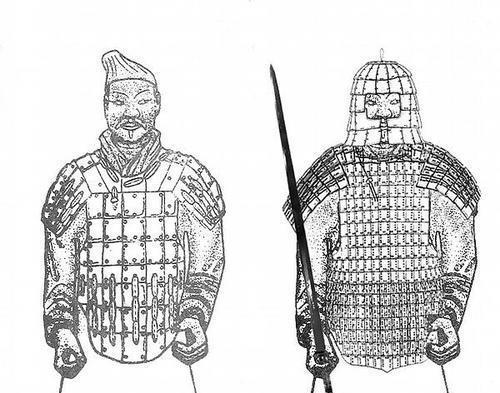As the founder of the Qin Dynasty, the founder of the great unified dynasty, Qin Shi Huang introduced many influential measures during his lifetime, so he was well known to future generations. Not only that, in order to show his merits, he also sent a large number of laborers to build one of the largest mausoleums in history, the Mausoleum of the First Emperor of Qin. Because of the large amount of coolie used to build this mausoleum, it took a long time, and its internal structure is very complex and unprecedented in scale. The number of funerary items in such a mausoleum is even more numerous, and the scale of the terracotta funerary pit alone is shocking enough. A recent new discovery by Chinese and German archaeologists has further refreshed people's understanding of the scale of funerary items in the Mausoleum of Qin Shi Huang.

Archaeologists have learned more about the tomb structure of this mausoleum through nuclear magnetic scanning. In this huge underground building, archaeologists have found many hidden large-scale complexes, and K9801 is one of the funerary pits. This burial pit is different from the Terracotta Warriors, it is not to guard the mausoleum of Qin Shi Huang, but the equipment of the Terracotta Army is equipped with a funeral pit, of which most of the burials are weapons and equipment used by soldiers.
As the largest funerary pit found so far, a large amount of armor is buried in it. These armors were not the ones worn by soldiers during the war, but were specially made of stone by craftsmen as funerary items. The reason why this mausoleum is one of the largest in the ancient imperial tombs can be seen from the production process of these stone armors that accompany the burial. Such a piece of stone armor has as many as 600 pieces of armor, each of which is carefully polished by craftsmen. It takes more than three hundred days for a craftsman to complete a piece of stone armor, and there are thousands of stone armor in this burial pit, which shows how much manpower, material and financial resources were spent on this mausoleum.
The archaeological significance of this burial pit is remarkable, and through the excavation of these armored stone helmets, archaeologists have a better understanding of the military situation during the Qin Dynasty, filling the gap caused by the lack of literature left over from that period. From the well-made stone armor and the complete chimerism between the nail pieces, it can be seen that the craftsman of that period was skilled in polishing jade.
One place worth noting is that archaeologists have found fish scale armor in this burial pit, and before the archaeological community believed that this armor first appeared in the Han Dynasty, this discovery broke this view and pushed forward the appearance of fish scale armor. There are more other funerary varieties in the Mausoleum of The First Emperor of Qin, and since these funerary objects have high research value, why don't archaeologists excavate these cultural relics?
This is related to the fact that the current cultural relics protection technology is still difficult to meet the requirements, and these rare funerary objects have been buried for more than two thousand years and have been isolated from the outside air for a long time. It seems that these funerary items are preserved intact, but only because they have not been excavated. After excavation, these funerary objects came into contact with the air, quickly oxidized, and it did not take long to disappear. Therefore, until there is no better way to protect the artifacts, it is best to continue to keep these artifacts in the mausoleum. As for the cultural relics that have been excavated, because there is no good protection measure, they may lose their archaeological value after a period of time, which is obviously an archaeological loss. These factors made the Mausoleum of the First Emperor of Qin even more mysterious. The mausoleum, which has not been excavated for more than two thousand years, has become one of the few mausoleums that attract archaeologists with its mysterious color.